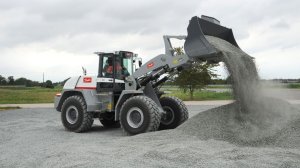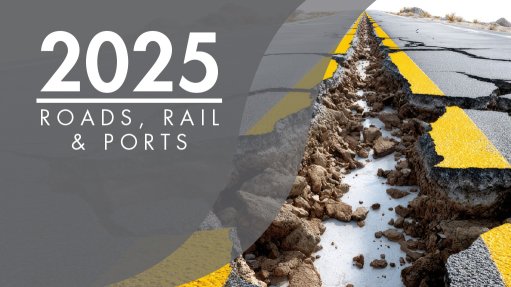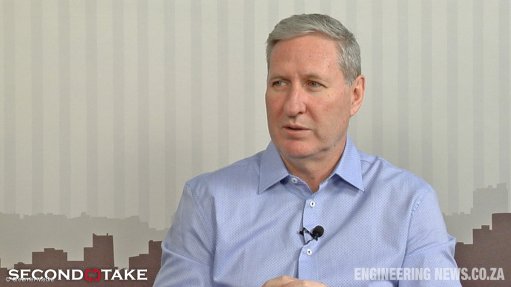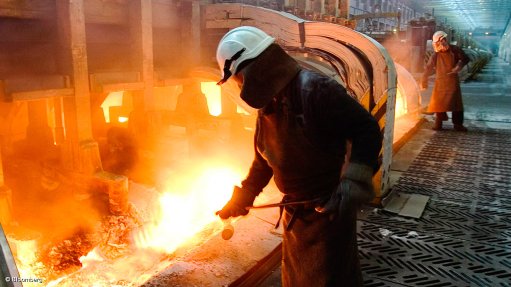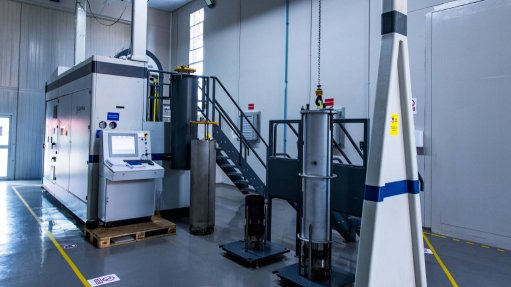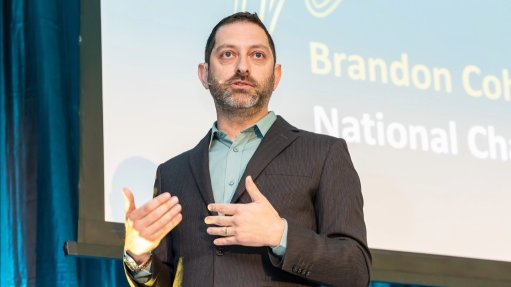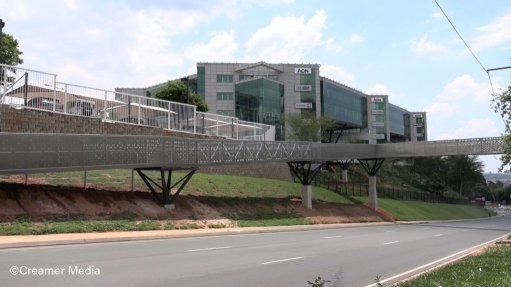New tech addresses labour gaps, sustainability


KEY DRIVER Sustainability is a key driver in how hydraulic components are designed and manufactured at Danfoss.
Labour shortages and sustainability are the two major trends shaping the future of hydraulics and pneumatics in Africa, says fluid control solutions supplier Danfoss.
“The industry is seeing fewer skilled workers, prompting a shift to smarter machines that can operate autonomously or be remotely controlled, while demand for sustainability is growing, as rising fuel costs and environmental regulations drive the adoption of electric or hybrid equipment.”
In response to these trends, the company is integrating electronics into hydraulic components – such as digital controls to allow for smoother steering and operations – while digitalising systems, enabling machines to transmit real-time data for improved monitoring and reduced downtime to enhance overall efficiency, predictive maintenance, and operational safety, adds Danfoss country manager Jan-Georg Kilian.
He stresses, however, that despite the shift toward electronic components, electric parts cannot always replace hydraulics entirely.
“There’s a common misconception that hydraulics and electrics are mutually exclusive. In fact, they complement each other in many cases.”
He notes that while electric systems have taken over in some low-power and rotary applications, replacing linear hydraulic power with electrified alternatives remains challenging owing to cost, durability, and size limitations.
This is why hydraulics remain the preferred solution for heavy-duty applications such as excavators. Consequently, Danfoss combines both technologies to deliver optimal results.
The company also designs its hydraulics systems to save energy using new technologies that lower fuel consumption without compromising on performance, and is developing smaller, lighter components that are more compact, yet as powerful as those used in the original designs.
Further, Danfoss is introducing load-sensing features so that pumps deliver only the required power; variable-speed drives to slow motors during idle times to save electricity; and smart sensors to detect leaks or wear early on, helping to reduce waste.
“Load-sensing systems with variable displacement pumps allow for a demand-based operation. These systems and pumps are equipped with sensors and valves that monitor the pressure and flow requirements of the hydraulic system and, by assessing the load, the pump can adjust its output to deliver only the necessary amount of hydraulic fluid, rather than operating at maximum capacity all the time.”
When the system is running but there is no immediate demand for hydraulic fluid, the pump automatically shifts into a standby mode. This approach reduces unnecessary operation and helps lower overall energy consumption by activating the pump only when fluid is actually required.
Kilian adds that adjusting flow and pressure in real time allows for better control over hydraulic functions, consequently enabling precise movement and machine operation that boosts productivity while lowering energy use.
He says sustainability is another key driver in how components are designed and manufactured, influencing everything from energy efficiency and performance features to the use of recyclable materials.
Compact, lightweight designs are prioritised to reduce material use and improve efficiency, while renewable-energy sources, such as solar and wind, are being integrated into manufacturing facilities to lessen their dependence on fossil fuels.
Life-cycle analysis and durability are also considered to extend product life and minimise waste, with technologies such as advanced filtration and low-leakage systems helping to cut emissions and promote cleaner operations.
These strategies ensure that hydraulic systems align with sustainable practices, balancing performance with environmental responsibility.
Moreover, Danfoss’s hydrostatic propulsion to spool valve solutions deliver best-in-class control for mobile machines, ensuring high productivity, enhanced safety and minimal emissions, says Kilian.
The solutions are supported by the company’s Plus+1 software, which allows for the integration of all Danfoss components into subsystems for greater efficiency and lower emissions.
Meanwhile, Danfoss’s Editron division focuses on the electrification of marine, and off- and on-highway applications.
Automation in these applications is improving fluid power by enhancing efficiency, precision, safety and overall performance.
Kilian notes that greater control allows mobile machinery to operate with improved accuracy, while automated systems dynamically adjust pressure and flow to ensure optimal operation and reduce human error.
Automation also reduces the need for manual intervention in hazardous environments and enables real-time condition monitoring to help prevent accidents and support safe operations.
It also allows for continuous diagnostics of mobile machinery, ensuring fast detection and resolution of issues, which helps to reduce downtime and maintenance costs.
By addressing labour shortages through automation and advancing sustainability through smarter, energy efficient technologies, Danfoss is helping to futureproof Africa’s fluid power sector.
“The company’s integrated approach ensures [that] hydraulics and electrics work in harmony to meet evolving industrial demands,” Kilian concludes.
Article Enquiry
Email Article
Save Article
Feedback
To advertise email advertising@creamermedia.co.za or click here
Comments
Press Office
Announcements
What's On
Subscribe to improve your user experience...
Option 1 (equivalent of R125 a month):
Receive a weekly copy of Creamer Media's Engineering News & Mining Weekly magazine
(print copy for those in South Africa and e-magazine for those outside of South Africa)
Receive daily email newsletters
Access to full search results
Access archive of magazine back copies
Access to Projects in Progress
Access to ONE Research Report of your choice in PDF format
Option 2 (equivalent of R375 a month):
All benefits from Option 1
PLUS
Access to Creamer Media's Research Channel Africa for ALL Research Reports, in PDF format, on various industrial and mining sectors
including Electricity; Water; Energy Transition; Hydrogen; Roads, Rail and Ports; Coal; Gold; Platinum; Battery Metals; etc.
Already a subscriber?
Forgotten your password?
Receive weekly copy of Creamer Media's Engineering News & Mining Weekly magazine (print copy for those in South Africa and e-magazine for those outside of South Africa)
➕
Recieve daily email newsletters
➕
Access to full search results
➕
Access archive of magazine back copies
➕
Access to Projects in Progress
➕
Access to ONE Research Report of your choice in PDF format
RESEARCH CHANNEL AFRICA
R4500 (equivalent of R375 a month)
SUBSCRIBEAll benefits from Option 1
➕
Access to Creamer Media's Research Channel Africa for ALL Research Reports on various industrial and mining sectors, in PDF format, including on:
Electricity
➕
Water
➕
Energy Transition
➕
Hydrogen
➕
Roads, Rail and Ports
➕
Coal
➕
Gold
➕
Platinum
➕
Battery Metals
➕
etc.
Receive all benefits from Option 1 or Option 2 delivered to numerous people at your company
➕
Multiple User names and Passwords for simultaneous log-ins
➕
Intranet integration access to all in your organisation


